Hemianthus Callitrichoides Cuba, also known as dwarf baby tears or HC cuba is rather challenging to keep, but a very good looking aquarium plant. This is a ground-covering plant, which is one of the smallest aquarium plants and one of the most wanted by aquarists. The plant is perfect for the front plan of nano tanks. It is very often used when decorating tanks in Iwagumi style (the name originates from the word iwa – «a stone» and gumi – «arrangement»). Dwarf baby tears is the most renowned, but rather demanding plant used in aquascaping. This plant creates incredibly beautiful carpet on the tank bottom.
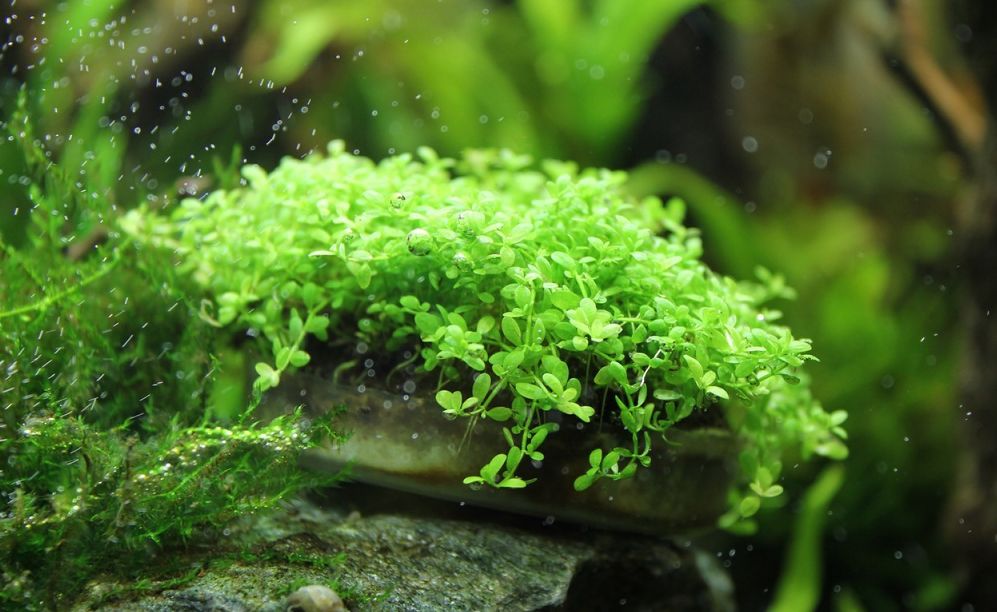
Contents
Plant Habitat in the wild
Hemianthus callitrichoides was discovered by Holger Windelov (founder of Tropica company) during the dry season in the river with a rock wash not far from Las Pozas, 90 km to the East from Havana (island of Cuba). The plant grew surrounded with large stones at water level about 50 cm high.
Hemianthus Callitrichoides Cuba forms thick green small glades which resist to rather strong water flow, especially during rain seasons, when the plat gets submerged up to 1 m deep. According to the latest data Hemianthus callitrichoides grows only in Cuba, however was also found in North America.
In aquarium hobby it has been used only since 2003, but since then it has become the most popular plant among the professional aquarists creating natural like aquascapes.
Description
Appearance of the plant is a miniature copy of that of Hemianthus micranthemoides. Hemianthus Callitrichoides Cuba is a small plant with tiny leaves, typically growing to a maximum height of about 1 inch (2.5 cm) and differs from Hemianthus micranthemoides in smaller leaves and shorter stem.
The leaves are very small and round, resembling tiny tears or droplets. They are usually bright green in color and have a delicate and intricate texture.
When provided with optimal conditions, Hemianthus Callitrichoides Cuba forms dense, carpet-like growth, spreading horizontally across the substrate. This growth pattern creates a lush and visually appealing carpet effect in the aquarium. Each individual stem of Hemianthus Callitrichoides is delicate and slender, with multiple leaves growing along its length.
| Aspect | Hemianthus Callitrichoides (Dwarf Baby Tears) |
|---|---|
| Common Name(s) | Dwarf Baby Tears; hc cuba; cuba plant; cuba carpet plant |
| Family | Scrophulariaceae |
| Native Region | Cuba |
| Growth Difficulty | High |
| Light Requirements | High (intense lighting) |
| CO2 Requirements | High (CO2 injection recommended) |
| Water Parameters | Soft to moderately hard, slightly acidic pH |
| Temperature Range | 68°F to 82°F (20°C to 28°C) |
| Maximum Height | 1 inch (2.5 cm) |
| Growth Rate | Moderate |
| Propagation | Runners, division, tissue culture |
| Ideal Placement | Foreground or carpeting plant |
| Suitable for Aquascaping | Yes |
| Tank Size Recommendations | Nano tanks to larger aquariums |
| Compatibility | Compatible with most fish and invertebrates |
| Maintenance Level | Moderate to high (trimming and pruning needed) |
| Special Considerations | Requires proper light, CO2, and nutrient dosing |
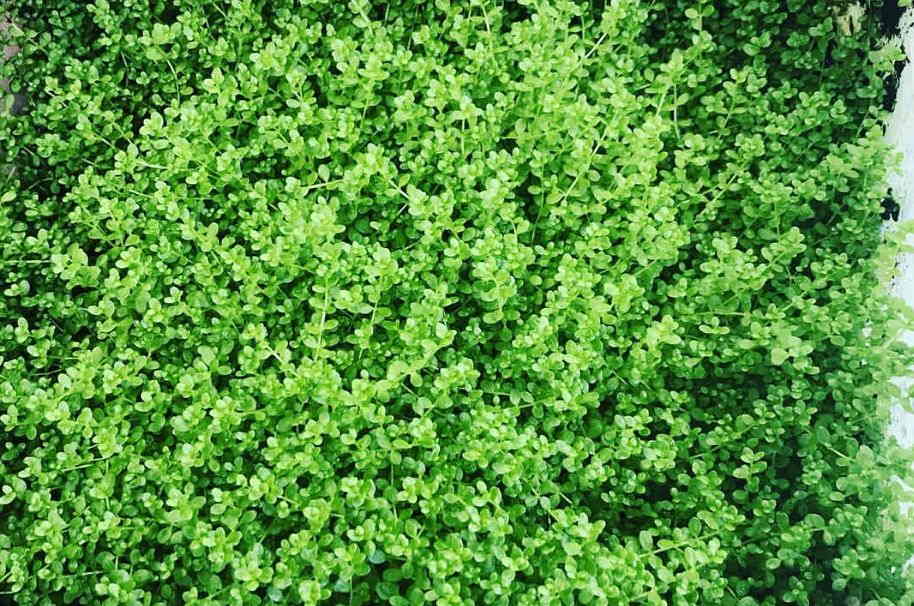
Difficulties in keeping
The hc cuba is a challenging one to keep, therefore it’s not recommended for beginner aquarists to keep. It has high demands in terms of mineral substances composition. It requires small grained substrate, high level of lighting and artificial CO2 supply.
It is recommended to plant Hemianthus callitrichoides «Cuba» plants several centimeters far from each other. Essential condition of successful cultivation of the plant is strong illumination, CO2 supply and fertilization.
Fast-growing plants neighboring with dwarf baby tears plant may shad it in time and gradually push it out. To avoid such a situation, you should regularly thin out and trim the them.
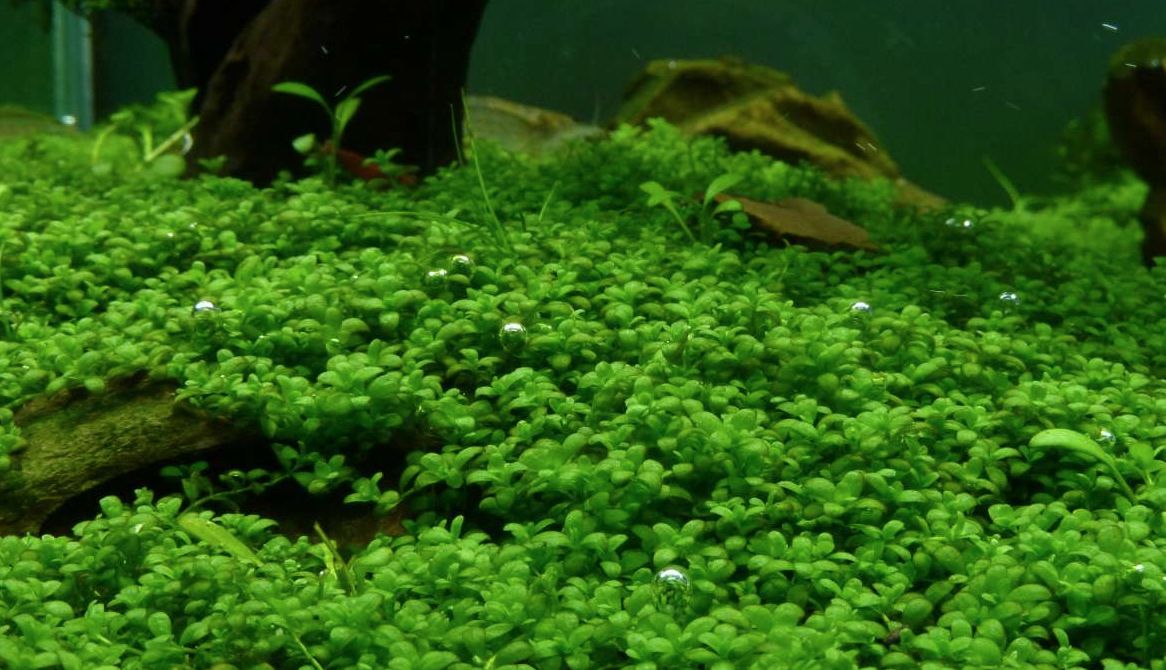
Dwarf baby tears carpet
This delicate and demanding plant forms a dense and low-lying carpet, with its tiny, round leaves tightly knit together. The result is a visually stunning and vibrant foreground, resembling a verdant meadow beneath the water’s surface. Achieving a successful carpet requires meticulous planting and ensuring that the stems have ample contact with the substrate. With the right conditions, including high-intensity lighting, adequate CO2 supplementation, and nutrient-rich substrate, the Dwarf Baby Tears carpet flourishes, providing a breathtaking and captivating centerpiece to any aquascape.
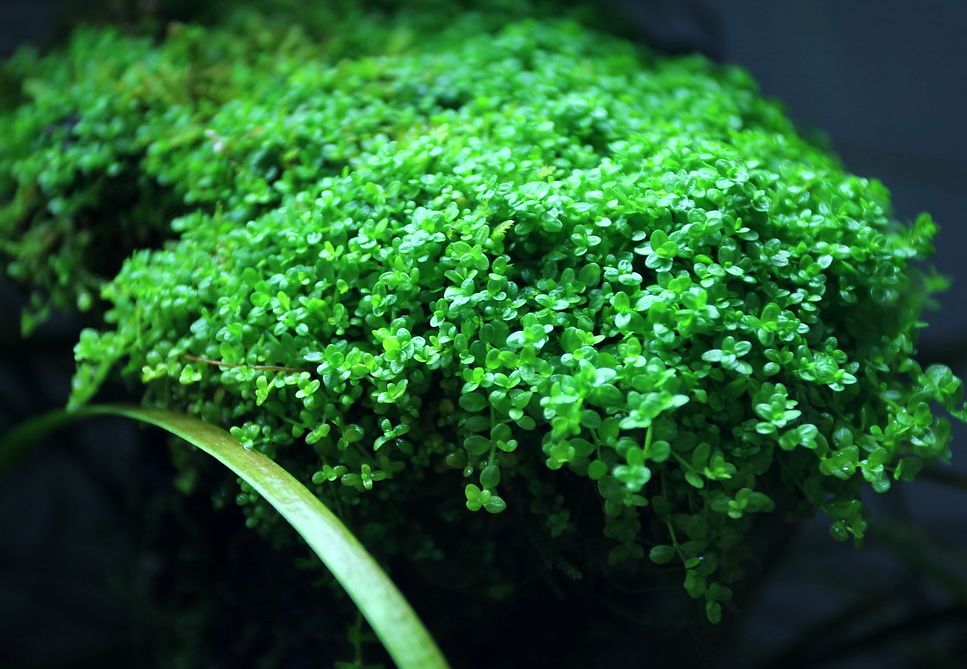
Keeping and care in a tank
Lighting
Hemianthus Callitrichoides, or Dwarf Baby Tears, is known for its high light requirements. Adequate lighting is crucial to promote healthy growth and vibrant coloration in this plant. The hc cuba is tolerant to lack of light and can develop successfully at such conditions, but in this case it grows elongated. However, if the light is very weak the plant stops growing at all. The stronger the lighting is, the thicker carpet it forms and at that its stems tightly bear to each other.
It is recommended to use light fixtures that emit a spectrum in the range of 6,500 to 10,000 Kelvin (K). This range closely mimics natural daylight and supports optimal plant growth. Hemianthus Callitrichoides benefits from a photoperiod of 8 to 10 hours per day. Consistency in the lighting schedule helps maintain a stable environment for the plant.
Consider the depth of the aquarium when choosing lighting. Deeper tanks may require more powerful light fixtures or placement of the plants closer to the light source to ensure adequate light penetration to the bottom.
Nutrients
Like other aquatic plants, Hemianthus Callitrichoides requires macronutrients such as nitrogen (N), phosphorus (P), and potassium (K). These macronutrients are essential for various metabolic processes, including photosynthesis and cell growth. They can be provided through liquid fertilizers or substrate additives specifically formulated for aquarium plants.
This plant is rather demanding in terms of fertilization, especially to iron content in water. In case of lack of the latter its leaves become pale and small. That’s why it is a must to use iron-containing liquid fertilizers in a precise dosage. After adding them into the tank water, the plant leaves quickly restore their initial color. So, this extraordinary plant can be also used as an indicator of iron content in the tank.
Provided with optimal conditions it turns out to be a quite fast-growing plant, that already requires fertilization in 3-4 weeks after it was planted. Regular dosing of liquid fertilizers according to the specific needs of Hemianthus Callitrichoides can help ensure a steady supply of nutrients. It is important to follow the manufacturer’s instructions and monitor the plant’s response to avoid over or underdosing.
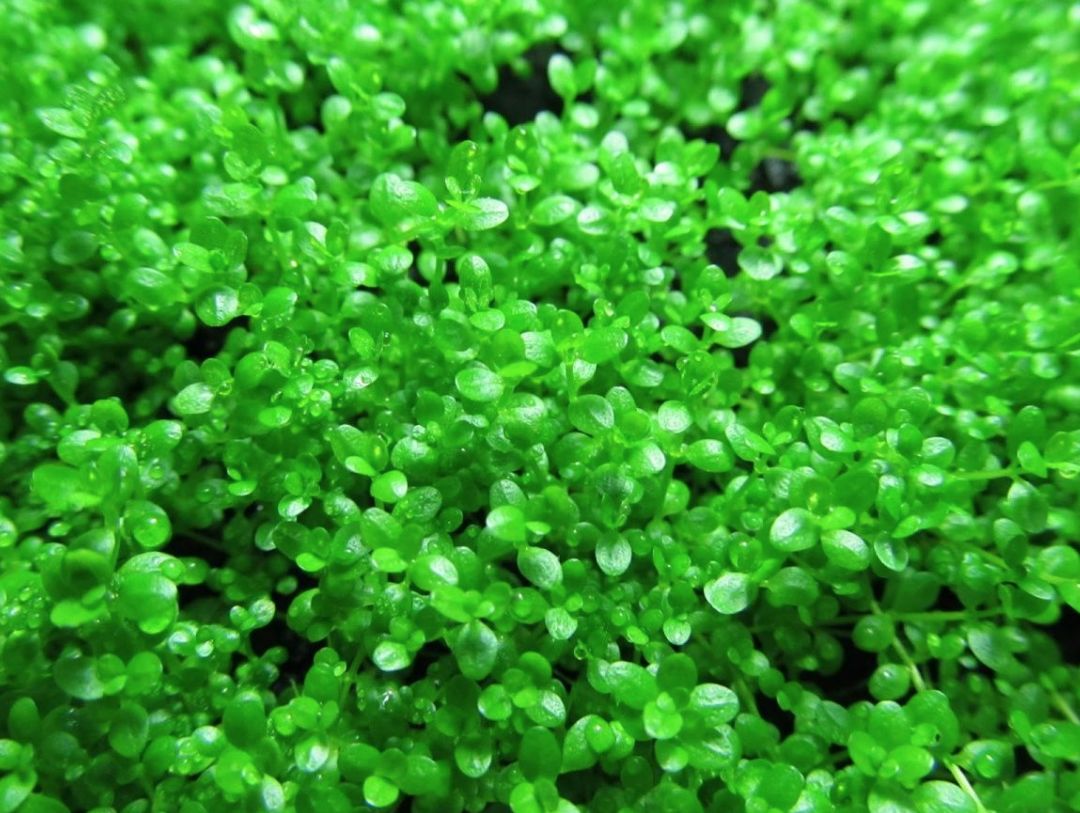
CO2
Hemianthus Callitrichoides is a demanding plant that benefits from elevated levels of carbon dioxide (CO2) in the aquarium. CO2 supplementation enhances photosynthesis, resulting in faster growth, improved coloration, and increased vitality.
If you create ideal growing conditions for the plant you can go without CO2 supply. However, adding CO2 speeds up the plant growth rate in several times.
The recommended CO2 concentration for Hemianthus Callitrichoides is in the range of 20 to 30 parts per million (ppm). It is important to monitor and adjust CO2 levels using a drop checker or CO2 monitoring device to prevent CO2 overdosing or deficiencies, which can adversely affect plant health.
Additional CO2 supply together with high level of illumination cause increase of the plant growth rate. That’s why it requires some trimming from time to time.
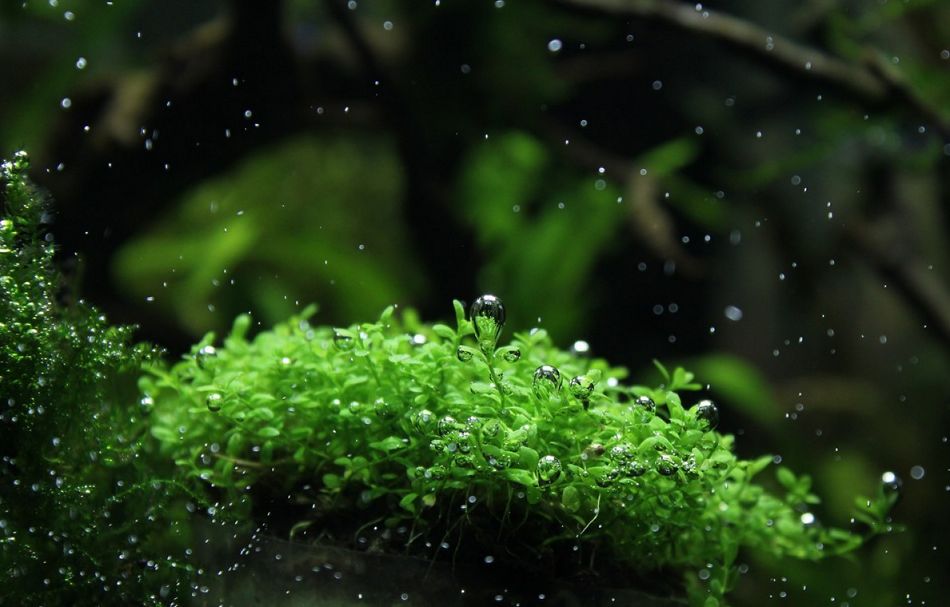
Water parameters
Optimal temperature for dwarf baby tears plant is around 25 °C. Keeping the water within this temperature range promotes optimal growth. Though it is quite ok with the temperature range from 20 to 28 °C.
This plant prefers slightly acidic to neutral pH levels. The ideal pH range for Hemianthus Callitrichoides is around 6.0 to 7.0. Monitoring and maintaining stable pH levels within this range are important.
Hemianthus Callitrichoides can tolerate a range of water hardness levels, but it generally prefers soft to moderately hard water. The recommended water hardness (KH) range is around 3 to 6 degrees.
Substrate
Using a nutrient-rich substrate or specialized aquatic soil can benefit the growth of Hemianthus Callitrichoides. These substrates provide essential nutrients to the plants’ root systems, contributing to their overall health and growth.
Since root system of the plant is rather weak, it is not recommended to siphonage the substrate around it. You shouldn’t allow the carpet grow higher than 2 cm high, since this may cause its tearing off from the substrate.
Water Flow
The plant likes moderately strong water flow and filtration as well as regular water renew. If the water stagnates, the plant growing pace slows down. In case of insufficient filtration it gets covered with algae and loses its attractiveness. Adequate circulation helps distribute nutrients and CO2 evenly, preventing stagnation and promoting healthy growth.
Therefore, periodical trimming of the carpet is necessary to reduce its volume.
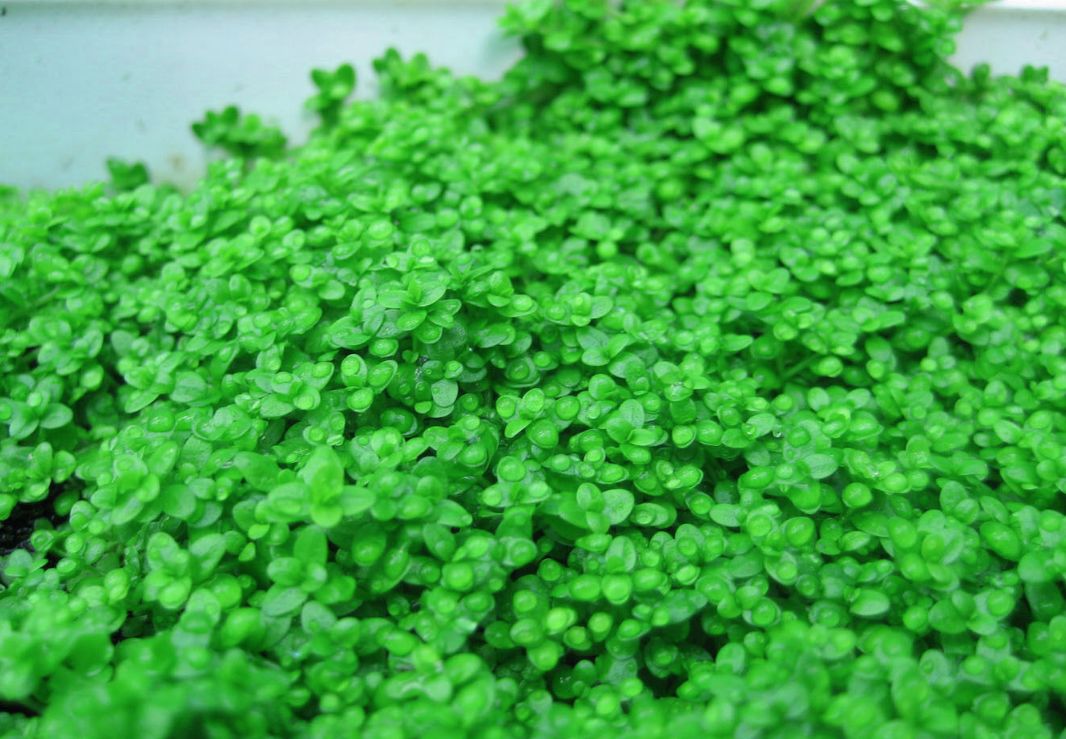
How to plant dwarf baby tears
The most crucial and troublesome thing for an aquarist is the process of Hemianthus callitrichoides planting. As we’ve already mentioned above, to grow successfully the plant requires small grained substrate as well as absence of bottom digging fishes in a tank.
There are two ways of Hemianthus callitrichoides planting:
The first one is when small bunches of the plant (not more than 1 cm in diameter) are put into cavities in the substrate and then they are buried so, that only several stems are left above the substrate. Some time later the plant appears on the surface of the substrate and starts to vegetate actively.
The second way is based on planting separate branches (about 2-3 of them). This approach is used when you don’t have enough of planting material. To do this you’ll need long thin pincers. The plans are buried into the substrate completely and only their top is left on the surface.
The lower part of the stem with leaves serves as an anchor holding the plant in the substrate until it forms its roots. To create a solid carpet the distance between separate plants shouldn’t exceed 1 cm.
Sources:
- https://www.researchgate.net/publication/277309390_In_vitro_high_frequency_regeneration_through_apical_shoot_proliferation_of_Hemianthus_callitrichoides_’Cuba’_-_a_multipurpose_ornamental_aquatic_plant
- https://tropica.com/en/plants/plantdetails/Micranthemumcallitrichoides’Cuba'(048BTC)/4478
- https://www.floridaaquatic.com/plant-blank-3